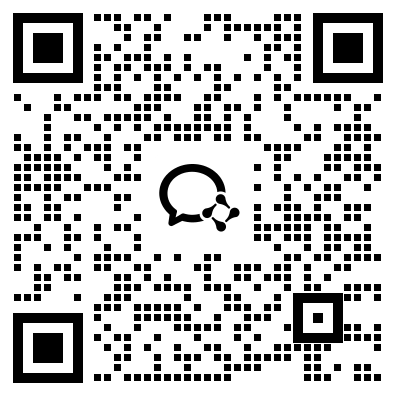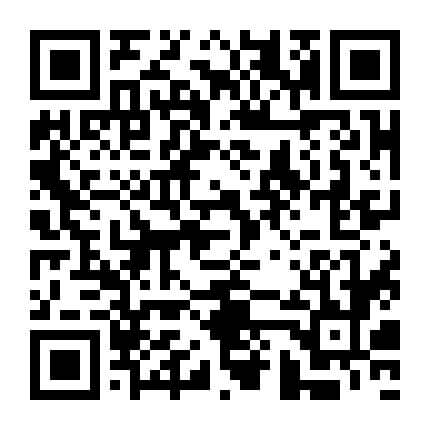考研201英语(一)在线题库每日一练(一百二十五)
摘要:以下是希赛网给大家分享考研201英语(一)在线题库每日一练,希望通过刷题可以帮助大家巩固重要知识点,对知识点查漏补缺,祝愿大家能顺利通过考试!
本文提供考研201英语(一)在线题库每日一练,以下为具体内容
1、Over the past decade, thousands of patents have been granted for what are called business methods. Amazon.com received one for its “one-click” online payment system. Merrill Lynch got legal protection for an asset allocation strategy. One inventor patented a technique for lifting a box.Now the nation's top patent court appears completely ready to scale back on business-method patents, which have been controversial ever since they were first authorized 10 years ago. In a move that has intellectual-property lawyers abuzz, the U.S. Court of Appeals for the Federal Circuit said it would use a particular case to conduct a broad review of business-method patents. In re Bilski, as the case is known , is “a very big deal”, says Dennis D. Crouch of the University of Missouri School of Law. It “has the potential to eliminate an entire class of patents.”Curbs on business-method claims would be a dramatic about-face, because it was the Federal Circuit itself that introduced such patents with its 1998 decision in the so-called State Street Bank case, approving a patent on a way of pooling mutual-fund assets. That ruling produced an explosion in business-method patent filings, initially by emerging Internet companies trying to stake out exclusive rights to specific types of online transactions. Later, more established companies raced to add such patents to their files, if only as a defensive move against rivals that might beat them to the punch. In 2005, IBM noted in a court filing that it had been issued more than 300 business-method patents, despite the fact that it questioned the legal basis for granting them. Similarly, some Wall Street investment firms armed themselves with patents for financial products, even as they took positions in court cases opposing the practice.The Bilski case involves a claimed patent on a method for hedging risk in the energy market. The Federal Circuit issued an unusual order stating that the case would be heard by all 12 of the court's judges, rather than a typical panel of three, and that one issue it wants to evaluate is whether it should “reconsider” its State Street Bank ruling.The Federal Circuit's action comes in the wake of a series of recent decisions by the Supreme Court that has narrowed the scope of protections for patent holders. Last April, for example, the justices signaled that too many patents were being upheld for “inventions” that are obvious. The judges on the Federal Circuit are “reacting to the anti-patent trend at the Supreme Court”, says Harold C. Wegner, a patent attorney and professor at George Washington University Law School.1.Business-method patents have recently aroused concern because of( ). 2.Which of the following is true of the Bilski case?3.The word “about-face” (Line 1, Para 3) most probably means ( ). 4.We learn from the last two paragraphs that business-method patents ( ). 5.Which of the following would be the subject of the text?
问题1
A、their limited value to businesses
B、their connection with asset allocation
C、the possible restriction on their granting
D、the controversy over their authorization
问题2
A、Its ruling complies with the court decisions.
B、It involves a very big business transaction.
C、It has been dismissed by the Federal Circuit.
D、It may change the legal practices in the U.S.
问题3
A、loss of good will
B、increase of hostility
C、change of attitude
D、enhancement of dignity
问题4
A、are immune to legal challenges
B、are often unnecessarily issued
C、lower the esteem for patent holders
D、increase the incidence of risks
问题5
A、A looming threat to business-method patents.
B、Protection for business-method patent holders.
C、A legal case regarding business-method patents.
D、A prevailing trend against business-method patents.
2、Ancient Greek philosopher Aristotle viewed laughter as “a bodily exercise precious to health.” But(1)some claims to the contrary, laughing probably has little influence on physical fitness. Laughter does (2)short-term changes in the function of the heart and its blood vessels, (3) heart rate and oxygen consumption. But because hard laughter is difficult to (4), a good laugh is unlikely to have (5) benefits the way, say, walking or jogging does. (6), instead of straining muscles to build them, as exercise does, laughter apparently accomplishes the (7), studies dating back to the 1930's indicate that laughter (8) muscles, decreasing muscle tone for up to 45 minutes after the laugh dies down. Such bodily reaction might conceivably help (9) the effects of psychological stress. Anyway, the act of laughing probably does produce other types of (10) feedback, that improve an individual's emotional state. (11) one classical theory of emotion, our feelings are partially rooted (12) physical reactions. It was argued at the end of the 19th century that humans do not cry (13) they are sad but they become sad when the tears begin to flow. Although sadness also (14) tears, evidence suggests that emotions can flow (15) muscular responses. In an experiment published in 1988, social psychologist Fritz Strack of the University of Würzburg in Germany asked volunteers to (16) a pen either with their teeth—thereby creating an artificial smile—or with their lips, which would produce a(n)(17) expression. Those forced to exercise their smiling muscles(18) more enthusiastically to funny cartoons than did those whose months were contracted in a frown,(19) that expressions may influence emotions rather than just the other way around. (20), the physical act of laughter could improve mood.
问题1
A、among
B、except
C、despite
D、like
问题2
A、reflect
B、demand
C、indicate
D、produce
问题3
A、stabilizing
B、boosting
C、impairing
D、determining
问题4
A、transmit
B、sustain
C、evaluate
D、observe
问题5
A、measurable
B、manageable
C、affordable
D、renewable
问题6
A、In turn
B、In fact
C、In addition
D、In brief
问题7
A、opposite
B、impossible
C、average
D、expected
问题8
A、hardens
B、weakens
C、tightens
D、relaxes
问题9
A、aggravate
B、generate
C、moderate
D、enhance
问题10
A、physical
B、mental
C、subconscious
D、internal
问题11
A、Except for
B、According to
C、Due to
D、As for
问题12
A、with
B、on
C、in
D、at
问题13
A、unless
B、until
C、if
D、because
问题14
A、exhausts
B、follows
C、precedes
D、suppresses
问题15
A、into
B、from
C、towards
D、beyond
问题16
A、fetch
B、bite
C、pick
D、hold
问题17
A、disappointed
B、excited
C、joyful
D、indifferent
问题18
A、adapted
B、catered
C、turned
D、reacted
问题19
A、suggesting
B、requiring
C、mentioning
D、supposing
问题20
A、Eventually
B、Consequently
C、Similarly
D、Conversely
3、The ethical judgments of the Supreme Court justices have become an important issue recently. The court cannot(1)its legitimacy as guardian of the rule of law(2)justices behave like politicians. Yet, in several instances, justices acted in ways that(3) the court's reputation for being independent and impartial. Justice Antonin Scalia, for example, appeared at political events. That kind of activity makes it less likely that the court's decisions will be(4)as impartial judgments. Part of the problem is that the justices are not(5) by an ethics code. At the very least, the court should make itself (6) to the code of conduct that (7) to the rest of the federal judiciary. This and other similar cases (8) the question of whether there is still a (9) between the court and politics. The framers of the Constitution envisioned law (10) having authority apart from politics. They gave justices permanent positions (11) they would be free to (12 )those in power and have no need to (13)political support. Our legal system was designed to set law apart from politics precisely because they are so closely (14) . Constitutional law is political because it results from choices rooted in fundamental social (15) like liberty and property. When the court deals with social policy decisions, the law it (16)is inescapably political—which is why decisions split along ideological lines are so easily (17) as unjust. The justices must (18) doubts about the court's legitimacy by making themselves (19) to the code of conduct. That would make rulings more likely to be seen as separate from politics and, (20), convincing as law.
问题1
A、emphasize
B、maintain
C、modify
D、recognize
问题2
A、when
B、lest
C、before
D、unless
问题3
A、restored
B、weakened
C、established
D、eliminated
问题4
A、challenged
B、compromised
C、suspected
D、accepted
问题5
A、advanced
B、caught
C、bound
D、founded
问题6
A、resistant
B、subject
C、immune
D、prone
问题7
A、resorts
B、sticks
C、loads
D、applies
问题8
A、evade
B、raise
C、deny
D、settle
问题9
A、line
B、barrier
C、similarity
D、conflict
问题10
A、by
B、as
C、though
D、towards
问题11
A、so
B、since
C、provided
D、though
问题12
A、serve
B、satisfy
C、upset
D、replace
问题13
A、confirm
B、express
C、cultivate
D、offer
问题14
A、guarded
B、followed
C、studied
D、tied
问题15
A、concepts
B、theories
C、divisions
D、conventions
问题16
A、excludes
B、questions
C、shapes
D、controls
问题17
A、dismissed
B、released
C、ranked
D、distorted
问题18
A、suppress
B、exploit
C、address
D、ignore
问题19
A、accessible
B、amiable
C、agreeable
D、accountable
问题20
A、by all means
B、at all costs
C、in a word
D、as a result
4、In the idealized version of how science is done, facts about the world are waiting to be observed and collected by objective researchers who use the scientific method to carry out their work. But in the everyday practice of science, discovery frequently follows an ambiguous and complicated route. We aim to be objective, but we cannot escape the context of our unique life experience. Prior knowledge and interest influence what we experience, what we think our experiences mean, and the subsequent actions we take. Opportunities for misinterpretation, error, and self-deception abound. Consequently, discovery claims should be thought of as protoscience. Similar to newly staked mining claims, they are full of potential. But it takes collective scrutiny and acceptance to transform a discovery claim into a mature discovery. This is the credibility process, through which the individual researcher's me, here, now becomes the community's anyone, anywhere, anytime. Objective knowledge is the goal, not the starting point. Once a discovery claim becomes public, the discoverer receives intellectual credit. But, unlike with mining claims, the community takes control of what happens next. Within the complex social structure of the scientific community, researchers make discoveries; editors and reviewers act as gatekeepers by controlling the publication process; other scientists use the new finding to suit their own purposes; and finally, the public (including other scientists) receives the new discovery and possibly accompanying technology. As a discovery claim works it through the community, the interaction and confrontation between shared and competing beliefs about the science and the technology involved transforms an individual's discovery claim into the community's credible discovery. Two paradoxes exist throughout this credibility process. First, scientific work tends to focus on some aspect of prevailing Knowledge that is viewed as incomplete or incorrect. Little reward accompanies duplication and confirmation of what is already known and believed. The goal is new-search, not re-search. Not surprisingly, newly published discovery claims and credible discoveries that appear to be important and convincing will always be open to challenge and potential modification or refutation by future researchers. Second, novelty itself frequently provokes disbelief. Nobel Laureate and physiologist Albert Azent-Gyorgyi once described discovery as “seeing what everybody has seen and thinking what nobody has thought.” But thinking what nobody else has thought and telling others what they have missed may not change their views. Sometimes years are required for truly novel discovery claims to be accepted and appreciated. In the end, credibility “happens” to a discovery claim—a process that corresponds to what philosopher Annette Baier has described as the commons of the mind. “We reason together, challenge, revise, and complete each other's reasoning and each other's conceptions of reason.” 1.According to the first paragraph, the process of discovery is characterized by its( ).2.It can be inferred from Paragraph 2 that credibility process requires ( ). 3.Paragraph 3 shows that a discovery claim becomes credible after it ( ). 4.Albert Szent-Gyorgyi would most likely agree that ( ). 5.Which of the following would be the best title of the test?
问题1
A、uncertainty and complexity
B、misconception and deceptiveness
C、logicality and objectivity
D、systematicness and regularity
问题2
A、strict inspection
B、shared efforts
C、individual wisdom
D、persistent innovation
问题3
A、has attracted the attention of the general public
B、has been examined by the scientific community
C、has received recognition from editors and reviewers
D、has been frequently quoted by peer scientists
问题4
A、scientific claims will survive challenges
B、discoveries today inspire future research
C、efforts to make discoveries are justified
D、scientific work calls for a critical mind
问题5
A、Novelty as an Engine of Scientific Development.
B、Collective Scrutiny in Scientific Discovery.
C、Evolution of Credibility in Doing Science.
D、Challenge to Credibility at the Gate to Science.
5、An old saying has it that half of all advertising budgets are wasted—the trouble is, no one knows which half. In the internet age, at least in theory, this fraction can be much reduced. By watching what people search for, click on and say online, companies can aim “behavioural” ads at those most likely to buy.In the past couple of weeks a quarrel has illustrated the value to advertisers of such fine-grained information: Should advertisers assume that people are happy to be tracked and sent behavioural ads? Or should they have explicit permission?In December 2010 America's Federal Trade Commission (FTC) proposed adding a “do not track” (DNT) option to internet browsers, so that users could tell advertisers that they did not want to be followed. Microsoft's Internet Explorer and Apple's Safari both offer DNT; Google's Chrome is due to do so this year. In February the FTC and the Digital Advertising Alliance (DAA) agreed that the industry would get cracking on responding to DNT requests.On May 31st Microsoft set off the row. It said that Internet Explorer 10, the version due to appear with windows 8, would have DNT as a default.Advertisers are horrified. Human nature being what it is, most people stick with default settings. Few switch DNT on now, but if tracking is off it will stay off. Bob Liodice, the chief executive of the Association of National Advertisers, says consumers will be worse off if the industry cannot collect information about their preferences. People will not get fewer ads, he says. “They'll get less meaningful, less targeted ads.”It is not yet clear how advertisers will respond. Getting a DNT signal does not oblige anyone to stop tracking, although some companies have promised to do so. Unable to tell whether someone really objects to behavioural ads or whether they are sticking with Microsoft's default, some may ignore a DNT signal and press on anyway.Also unclear is why Microsoft has gone it alone. After all, it has an ad business too, which it says will comply with DNT requests, though it is still working out how. If it is trying to upset Google, which relies almost wholly on advertising, it has chosen an indirect method: There is no guarantee that DNT by default will become the norm. DNT does not seem an obviously huge selling point for windows 8—though the firm has compared some of its other products favourably with Google's on that count before. Brendon Lynch, Microsoft's chief privacy officer, blogged: “We believe consumers should have more control.” Could it really be that simple?1.It is suggested in Paragraph 1 that “behavioural” ads help advertisers to( ).2.“The industry” (Line 4, Para.3) refers to ( ). 3.Bob Liodice holds that setting DNT as a default( ).4.Which of the following is true according to Paragraph 6?5.The author's attitude towards what Brendon Lynch said in his blog is one of( ).
问题1
A、ease competition among themselves
B、lower their operational costs
C、avoid complaints from consumers
D、provide better online services
问题2
A、online advertisers
B、e-commerce conductors
C、digital information analysis
D、internet browser developers
问题3
A、may cut the number of junk ads
B、fails to affect the ad industry
C、will not benefit consumers
D、goes against human nature
问题4
A、DNT may not serve its intended purpose.
B、Advertisers are willing to implement DNT.
C、DNT is losing its popularity among consumers.
D、Advertisers are obliged to offer behavioural ads.
问题5
A、indulgence
B、understanding
C、appreciation
D、skepticism
点击查看【完整】试卷>>延伸阅读
- 历年考研国家分数线汇总(更新至2025年)
- 2025考研国家分数线正式发布
- 2025全国各省考研初试成绩公布时间汇总(更新中)
- 2025年考研成绩公布时间及查询流程
- 2025年全国硕士研究生招生考试(初试)温馨提示汇总
- 2025年全国硕士研究生招生考试考场规则

考研微信公众号

考研备考资料免费领取
去领取
- 1
- 1
- 6
 专注在线职业教育24年
专注在线职业教育24年









 扫描二维码
扫描二维码
 扫描二维码
扫描二维码








